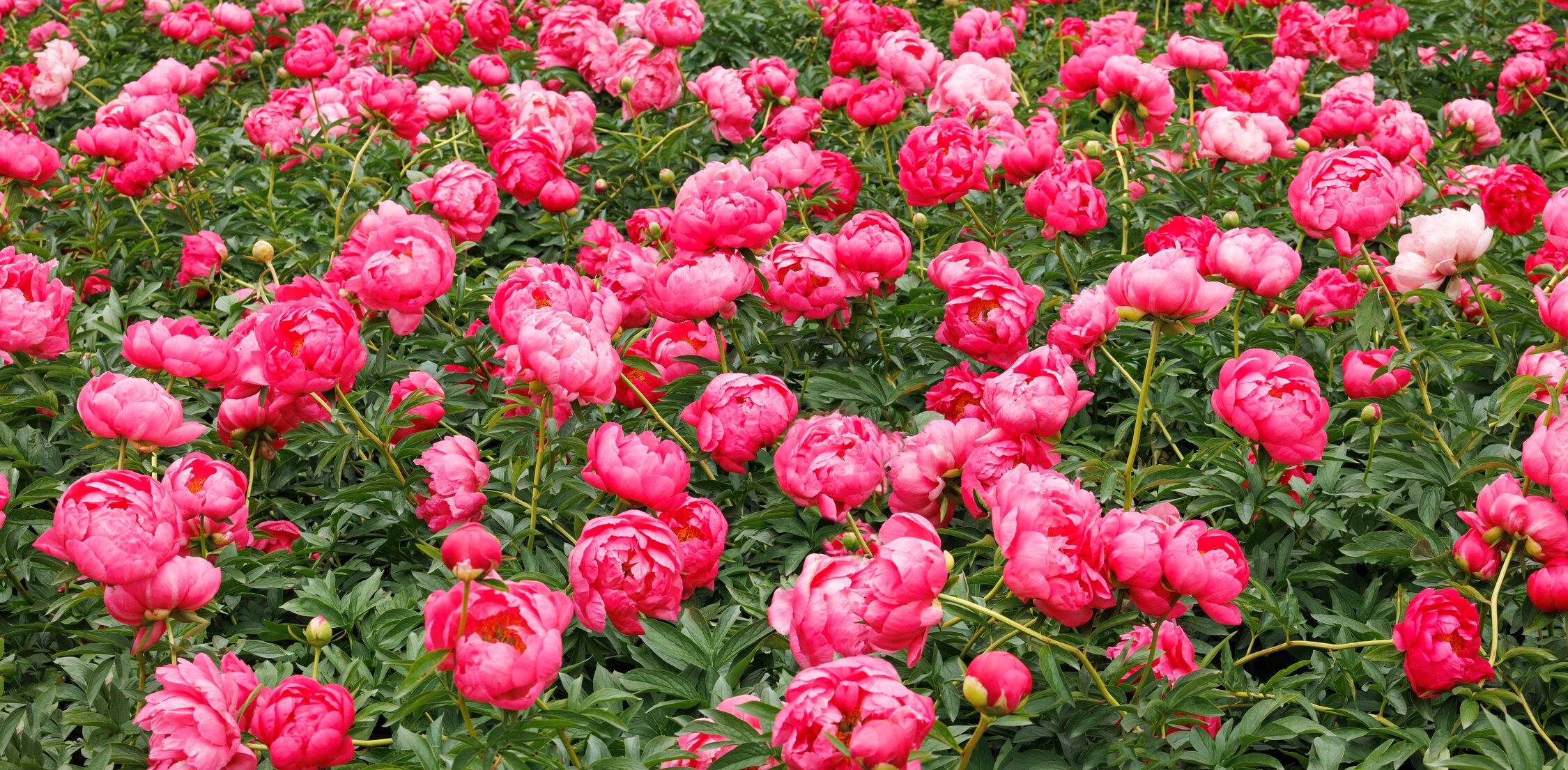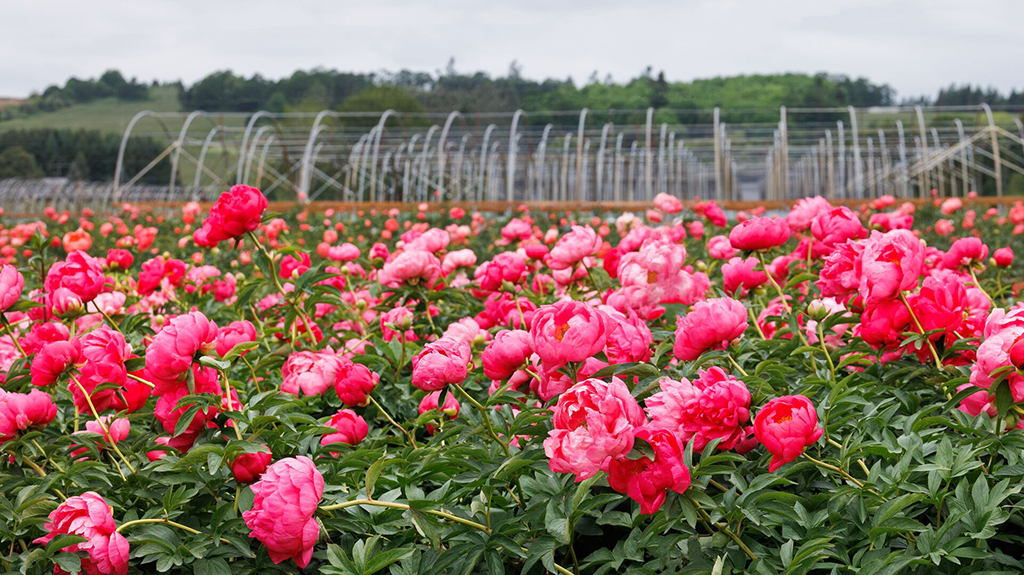A Guide to the Most Popular Types of Peonies
Peonies, with their lush blooms and enchanting fragrance, have captured the hearts of gardeners for centuries. These flowers belong to the Paeonia genus, which has species native to Asia, Europe, and Western North America. Did you know that peony plants can bloom for 100 years or more with proper care? It's no wonder they are a favorite among gardeners and a popular choice for floral arrangements and weddings.
The first step in adding this garden staple to your space is choosing the right variety. In this guide, we'll explore the three main types of peonies: Herbaceous, Tree, and Intersectional. Let's get started!
Herbaceous Peonies
Herbaceous peonies are the most common type of peony found in gardens. Herbaceous peonies are chiefly derived from the Chinese species Paeonia lactiflora and are known for their large, fragrant blooms.
Some popular herbaceous peony varieties include:

'Sarah Bernhardt'
A variety with double, pale pink flowers.
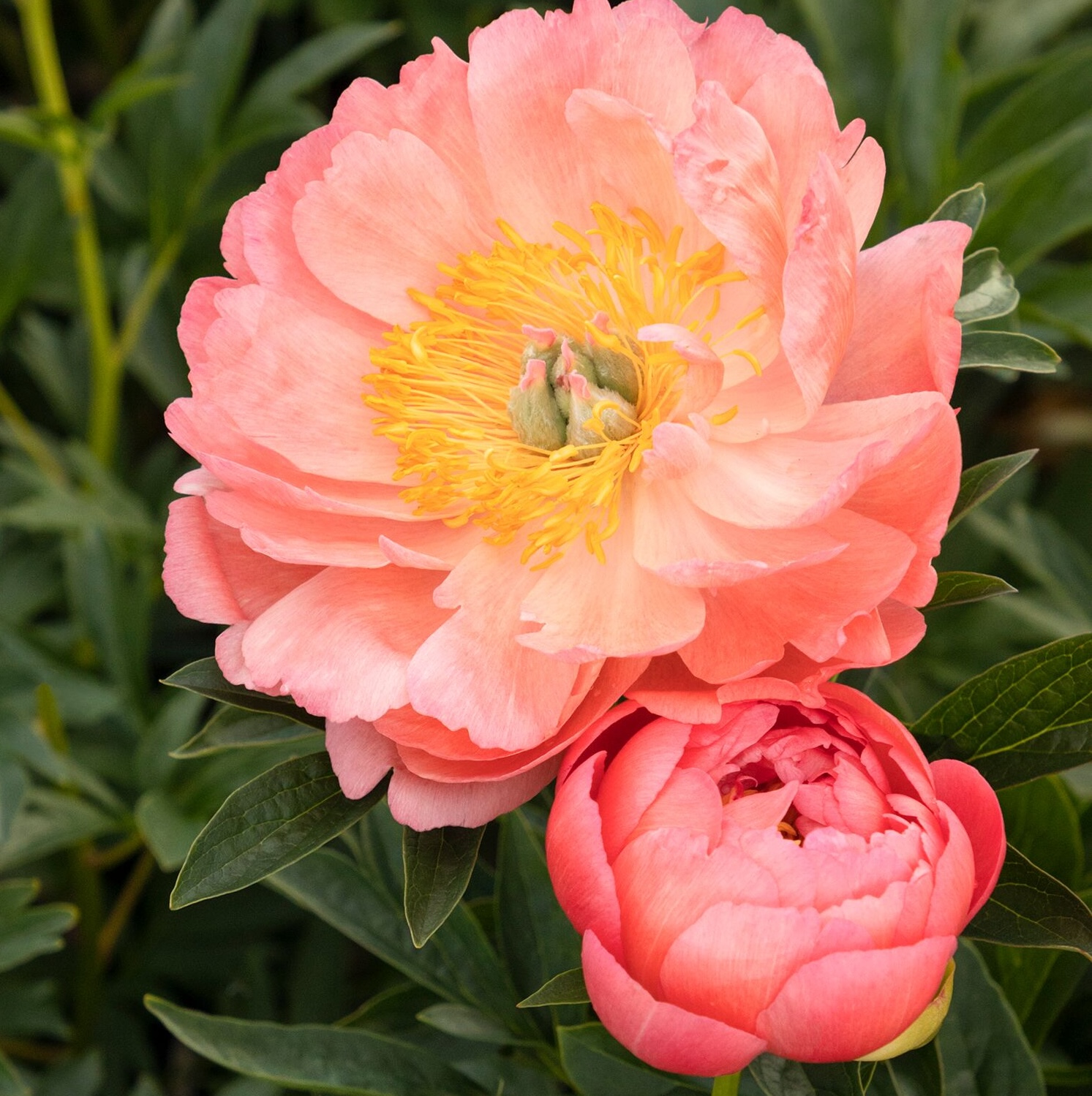
Pink Hawaiian Coral
A classic rose-shaped bloom with coral-pink flowers.
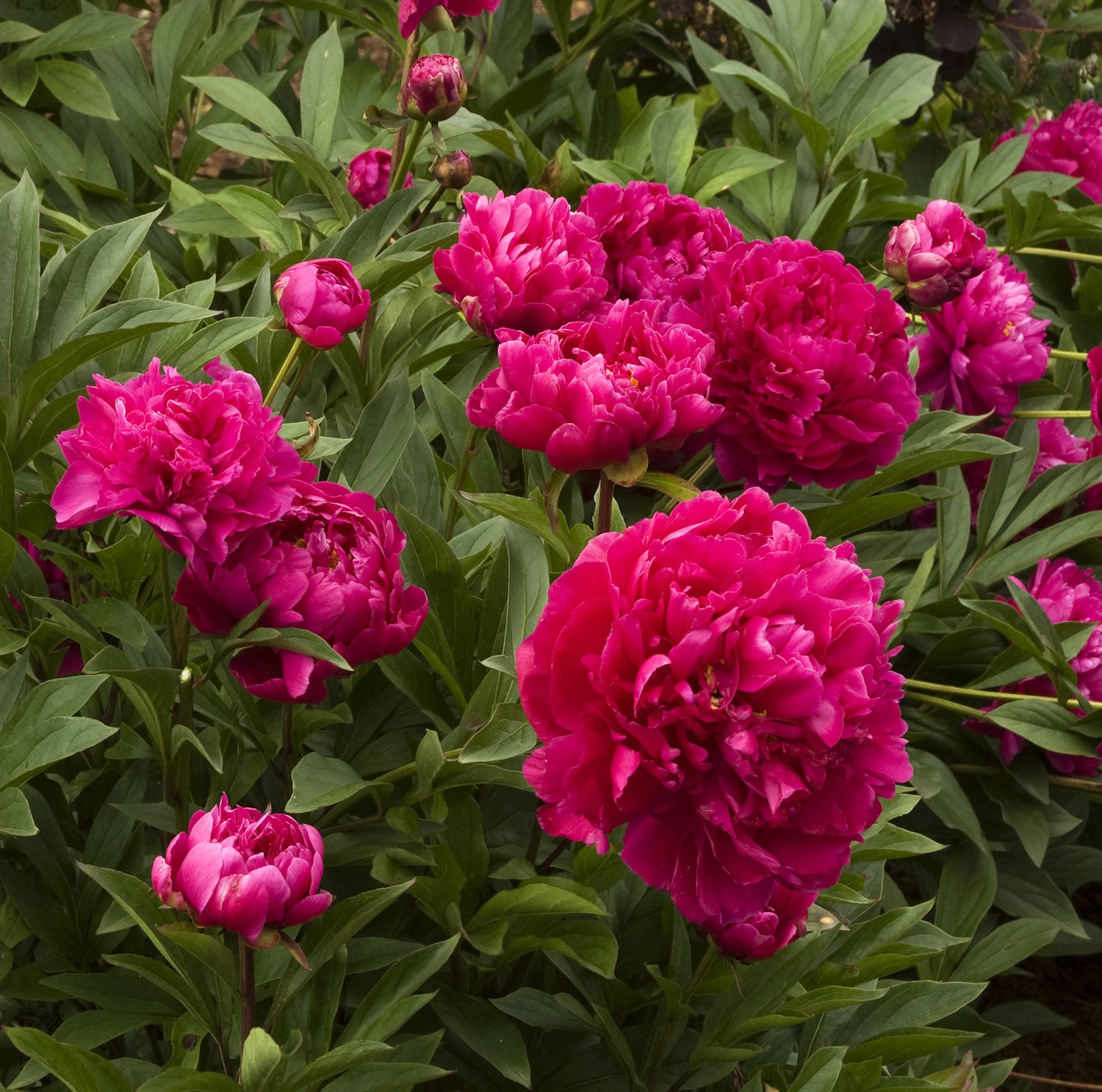
Karl Rosenfield
A variety with deep red, double blooms.
Herbaceous peonies are cold-hardy and grow on long stems, making them well-suited for cooler climates. They require a period of cold dormancy to bloom, so they are not often grown in warmer regions. As the most common type of peony, herbaceous peonies die back to the ground during late fall and rebloom come springtime.
To grow herbaceous peonies successfully, plant them in well-draining soil and full sun. Avoid planting them too deeply, as this can hinder blooming if impacted by competing roots. Herbaceous peonies are relatively low-maintenance and can thrive for decades with proper care.
Tree Peonies
Tree peonies are a magnificent addition to any garden, with their woody stems and large, exotic-looking flowers. Unlike herbaceous peonies, tree peonies don't die back to the ground in winter. They form woody trunks and can grow up to 6 feet tall. Tree peonies have the species names Paeonia suffruticosa or P. suffruticosa x P. lutea or P. delavayi.
Some notable tree peony varieties are:
High Noon
A variety with soft yellow, semi-double flowers.
Shimadaijin
A Japanese variety with reddish-purple, semi-double blooms.
Hana-Kisoi
A variety with light pink, ruffled flowers.
Tree peonies prefer well-draining soil and partial shade, especially in hot climates. Prune tree peonies minimally, removing dead or damaged branches in the fall (never summer!) once the leaves turn yellow. But be sure not to remove the woody part of the plant.
Intersectional (Itoh) Peonies
Intersectional peonies are a unique hybrid created by crossing herbaceous and tree peonies, resulting in a plant that combines the best qualities of both types. The most well-known intersectional peonies are the Itoh peonies, also called the romantic peony flower.
Some popular Itoh peony varieties include:
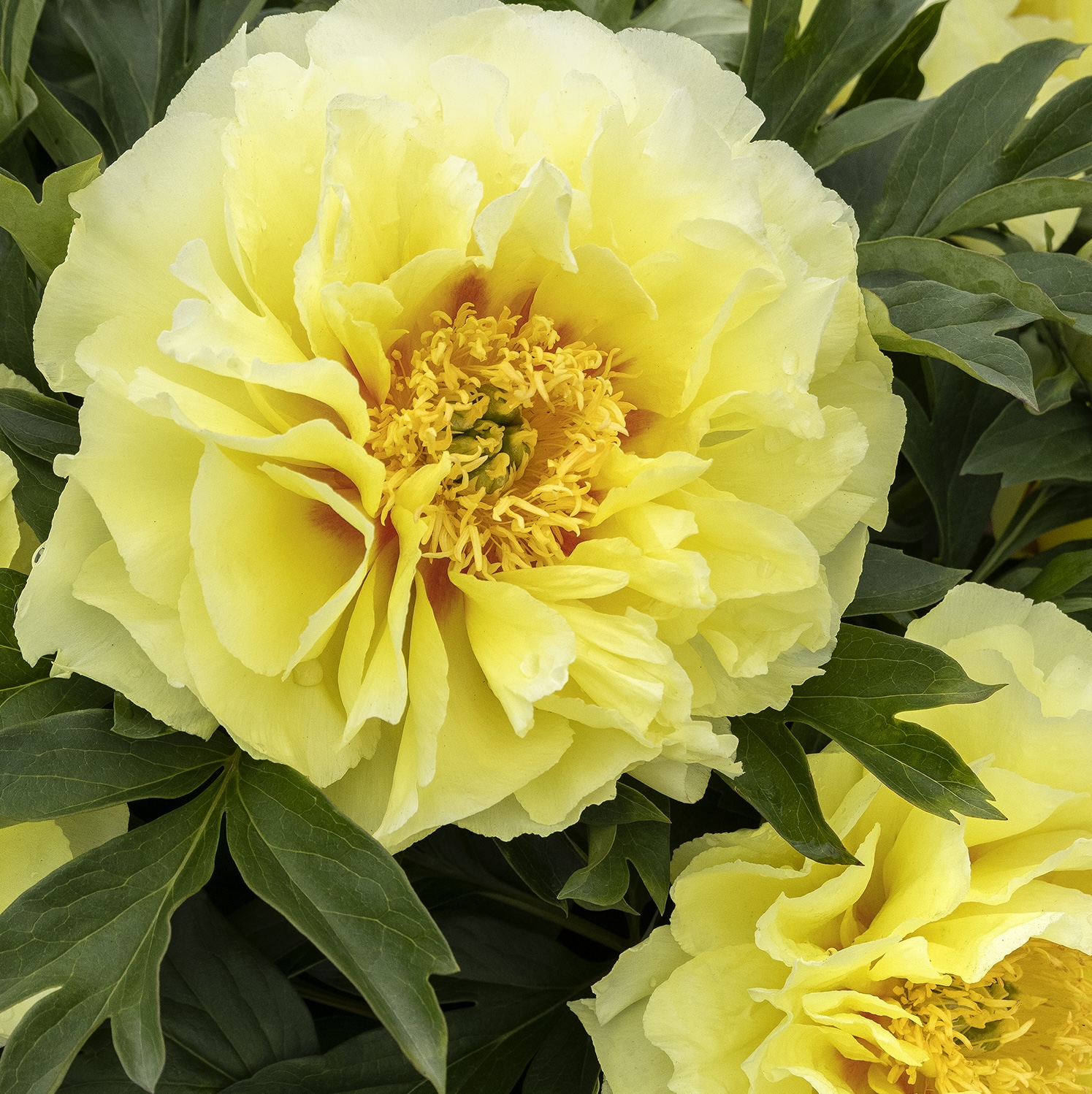
Bartzella
A variety with huge, yellow, semi-double flowers.
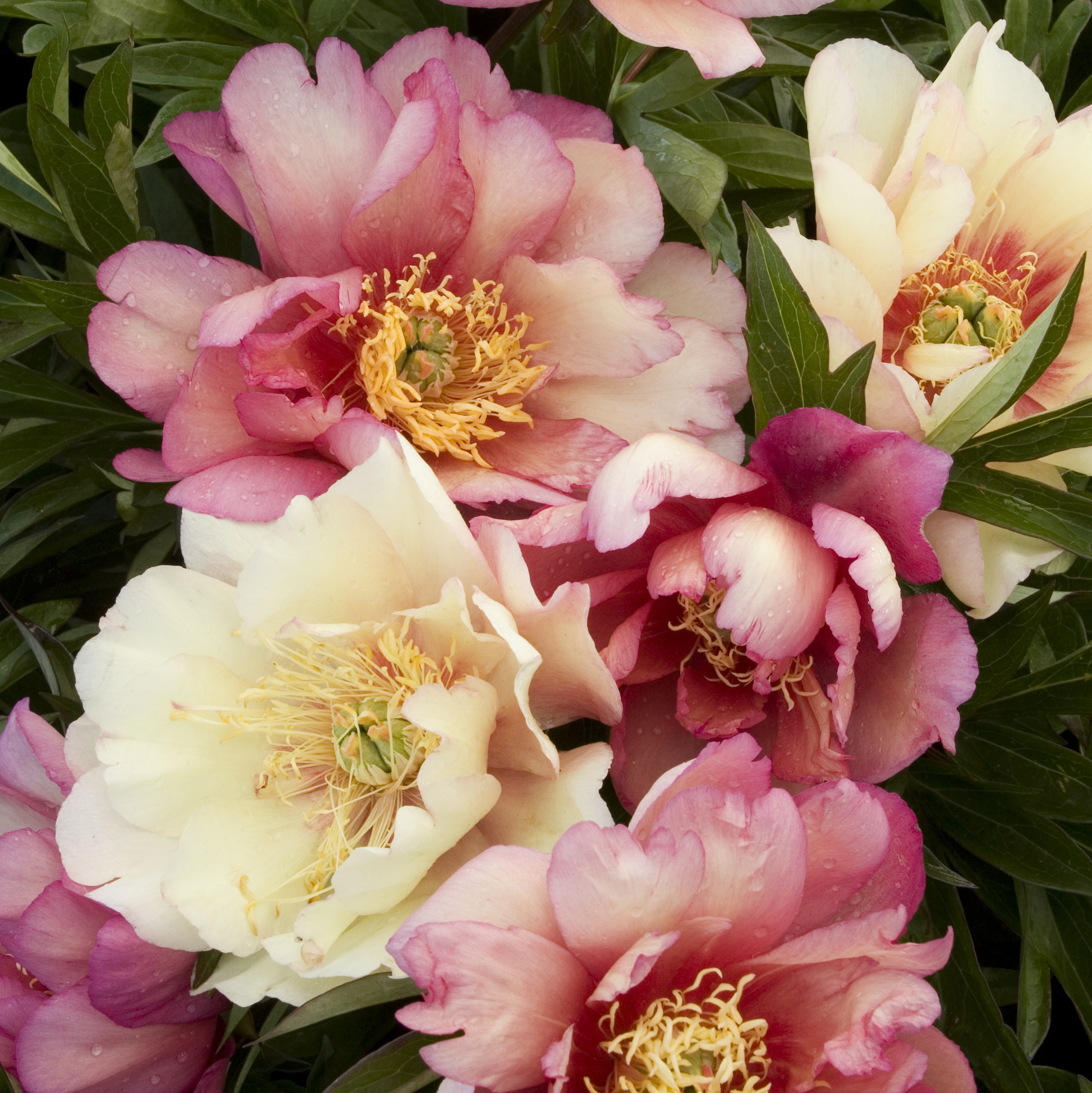
Julia Rose
A variety with apricot-pink, semi-double blooms and yellow centers.

Cora Louise
A variety with creamy white, semi-double flowers and lavender flares.
Intersectional peonies boast the large, showy flowers of tree peonies while maintaining the herbaceous growth habit of dying back to the ground each winter. A notable advantage of Itoh peonies is their ability to thrive in warmer climates, as they don't require a winter chill to bloom. They also have an extended flowering period, lasting up to 6 weeks as new buds continuously open to replace spent blooms.
For more garden inspiration, check out Monrovia's guide, 5 Ways to Design with Colorful Itoh Peonies.
Peony Flower Types and Colors
Peonies come in various flower types and colors, making them versatile for any garden. They also make excellent cut flowers, lasting for days in a vase.
The main flower forms are:
- Single: Large, open flowers with a single row of petals surrounding a center of stamens.
- Semi-Double: Flowers with several rows of petals and visible stamens.
- Double: Full flowers with many petals and hidden stamens. The double flowering variety is among the most popular peony types.
- Bomb: Flowers with a dense center of petals surrounded by a ring of larger petals.
- Japanese: Flowers with a single or double row of petals and a center of modified stamens (staminodes).
Peony colors range from pure white to shades of pink, red, coral, yellow, and even bi-colored varieties. Some of the most sought-after peonies feature large fluffy double blossoms in shades of pink and white, making them perfect for romantic bouquets and floral arrangements.
Peonies also have many different smells, adding another layer of enjoyment to the garden. For example, the yellow blooms of the Bartzella Itoh peony have a slightly spicy scent, while the Singing in the Rain Itoh peony holds a soft, pleasing fragrance. The diverse array of peony fragrances, ranging from subtle and sweet to more complex and spicy, means that there's a scent to suit every preference.
Planting and Caring for Peonies
Peonies are easy to care for and can live for decades, making them a beautiful, long-lasting addition to your garden. Plant peonies in a sunny, well-drained spot with slightly acidic or neutral soil for best results. Space plants 3-4 feet apart to allow room for growth and air circulation.
When planting, dig a hole twice as wide as the root ball and place the peony with the eyes facing upward, just 2 inches below the soil surface. Avoid planting too deeply, as this can hinder blooming. Water deeply and mulch after planting.
To ensure your peonies thrive:
- Plant them where they will get at least 6 hours of sunlight daily
- Water deeply every 7-10 days for establishment, then reduce the frequency
- Avoid overwatering to prevent root rot
When selecting peonies for your garden, it's worth noting that Monrovia peonies are already two years old and primed to produce an abundance of blooms when they arrive at the garden center, giving you a head start. Peonies from other garden centers may not bloom during their first year, but this is normal for young peonies.
Explore Monrovia's Peony Care Guide for more tips on keeping your peonies thriving for years.
Additional Questions about Peonies
What is the best time to plant peonies?
Peonies can be planted in either spring or fall in most parts of the United States. However, the optimal planting time may vary depending on your specific planting zone. You can find your planting zone here.
How often should I fertilize my peonies?
Peonies don't need frequent fertilization. Well-prepared soil with compost during planting should provide sufficient nutrients. Only fertilize once in early summer after blooming if the soil is poor, and avoid fertilizing more than every few years to prevent over-fertilization.
When and how should I prune my peonies?
Prune peonies in the fall when the leaves turn yellow. Never cut them back during summer, as the foliage needs to absorb sunlight for energy storage. Cut the stems to ground level without damaging the crown to prevent pests and diseases and promote airflow and sunlight penetration. Follow the same steps for tree peonies, but don't remove the woody part.
Looking for More Ideas?
Turn to the gardening experts at Monrovia! You can subscribe to our monthly Grow Beautifully Newsletter to get inspiration, tips, design advice, and free digital guides delivered straight to your inbox twice a month.




